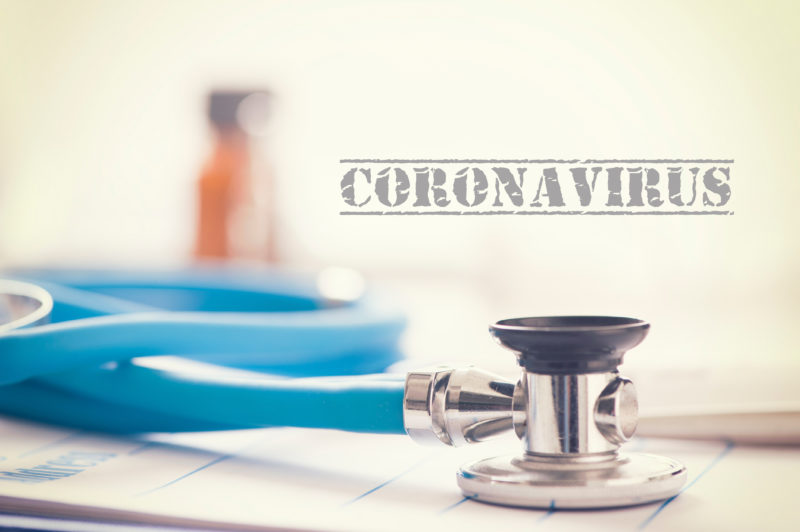The coronavirus pandemic in the United States has led to great efforts to prevent the spread of the virus and to prevent fatalities.
But the problems that people will face due to the pandemic will go beyond medical issues. In addition, it will be important to address a variety of psychosocial issues. Of particular concern are (1) covering the cost of testing and treatment for all people in the United States for whom testing is medically advisable including people with no health coverage, (2) dealing with the impact of disruptions such as school closures, layoffs, lost income, lack of in-home services, loss of access to social and behavioral health services, difficulty getting food, loss of family caregiving, etc., and (3) dealing with the psychological fallout for those who get the disease, their families, and their caregivers.
This article highlights the behavioral health challenges that will need to be met.

Although it is unlikely that many people will develop new mental or substance use disorders as a result of their experience during the pandemic, some will, and it is likely that many will experience exacerbations of PTSD, anxiety disorders, depression, and psychosis. In addition, many people will experience emotional challenges due to stress, isolation, confrontation with mortality, and grief.
This is of particular concern for the courageous people who will work directly with people who contract COVID-19.
In general, it is important to develop plans for diverse populations including varying social-economic status groups, ethnic and racial groups, household composition, ages, and lifestyles.

Michael B. Friedman, LMSW
Psychological Fallout of a Pandemic
Below is an outline of psychological issues that need to be addressed. It is not intended to be comprehensive or detailed or to provide specific solutions. That has to happen through planning processes that hopefully will soon address the psychological fallout of the pandemic. The purpose of this document is simply to note areas to be addressed.
Prevalence of Behavioral Health Conditions: Although most people living through a pandemic or natural disaster generally will not develop new diagnosable mental or substance use disorders, some will. Many will experience exacerbations of PTSD, anxiety disorders, depression, psychosis, or substance abuse. And the risk of relapse—especially for people in recovery from addiction—is significant for people experiencing great stress and/or cut off from their usual sources of help.
In addition, a great many people will experience less severe, but very troubling emotional issues. The stress of major disruptions in life and of responsibility for the survival of family and friends can be very difficult to manage. Loss of income can be deeply troubling. Isolation due to quarantine or the loss of in-home supports for people with disabilities can have significant psychological consequences. For some people, confronting mortality may also stir up troubling emotions. And the deaths of people one cares about will undoubtedly result in grief.
Costs of Behavioral Health Care
Although most people in the U.S. have health coverage, behavioral health services are rarely fully covered, and co-pays may be prohibitive. It is essential to cover the full costs of behavioral health services for those suffering from the psychological consequences of the pandemic. This includes eliminating cost sharing in all forms of insurance—Medicare, Medicaid, employer-based health insurance, etc. And it includes covering costs for the millions of people living in the United States who have no health care coverage at all. This includes many self-employed people, day and gig workers, undocumented immigrants, and foreign travelers, among others.
Access to Behavioral Health Services
Access to behavioral health services is limited in the best of times. During a pandemic, it will be more difficult to provide behavioral health services due to:
- Increased need
- Increases in homebound populations due to quarantine
- High staff outages
- Preventive measures that limit allowing people with coronavirus onto treatment sites
- Limited reimbursement for telephonic services and other forms of tele-behavioral health.
Preparation by Behavioral Health Providers
Organizations and private practitioners providing behavioral health services will need to prepare to maintain as much service as possible during a pandemic. This should include planning how to provide services if offices are closed, workers are out due to illness or family responsibilities, etc.
Making sure that people have an adequate supply of medication and adhere to treatment will be critically important to preventing relapse
Of particular concern is payment for telephonic and other off-site services and remaining financially viable if traditional service delivery is impeded.
Management of Risks in Congregate Care and Group Settings
For programs that provide residential services and/or group programs such as day treatment and psychiatric rehabilitation, managing health care risks without locking people out of service will be a particular challenge.
Behavioral Health Services in the Home
Behavioral health services in the home are in short supply ordinarily. If there is a pandemic, this will become a crisis. Home care workers may themselves be out of work due to illness, or they may be unwilling or precluded from entering the homes of people who are quarantined.
Telehealth in various forms will be essential to serve people who are homebound. There will need to be changes in the reimbursement rules regarding telehealth services to cover these costs.
Psychological Support for Health Care Workers
The stress of providing health care for people with a highly contagious and possibly fatal disease is enormous. Staff burn-out is common. The people who do this courageous and vital work often need help themselves to manage the stress they live with.
Telephonic and On-line Information and Referral and Crisis Intervention
There are a number of telephonic and on-line information and referral and crisis intervention services. These hotlines and helplines will need to be prepared to respond to needs related to COVID-19. It will be particularly important for them to maintain information in real time about service closures and service availability.
There is a national Disaster Distress Helpline (1-800-985-5990; Text:“TalkWithUs” to 66746), but there needs to increased public awareness and additional funding to handle greater volume.
It will also be important to provide public information about mental and substance use conditions that can arise during a disaster and how to deal with them.
Training for People Providing Services During a Pandemic
It will be important to provide training for people providing services regarding how to manage psychological and behavioral issues during a crisis. This includes primary health care providers, EMTs and other first responders, staff of social service and other helping organizations, staff of congregate facilities including community residences, assisted living, nursing homes, shelters, etc.
Training is also essential for behavioral health personnel regarding the physical aspects of the virus.
Impact of “Disruptions”
Disruptions such as school and workplace closures, canceled events, etc. will be emotionally difficult for people with adequate financial and other resources. They will create great emotional challenges for people who will be devastated by the disruptions, such as people who live from paycheck to paycheck or from day-job to day-job and for people for whom stability is key to well-being such as those with mental disorders, those in recovery from addiction, those with dementia, family caregivers, and others.
For these populations, assistance needs to be available to provide childcare, adequate income support, and essential services. They will also need psychological support.
Behavioral Health Services in Community Settings
One of the lessons of responding to behavioral health needs during a disaster is that it is critical to provide psychological support (such as mental health first aid) in community settings where people seek help for other reasons. This includes houses of worship, food banks, senior centers, etc.
Addressing Issues of Particular Populations
Behavioral health conditions vary from population to population. In preparing for the psychological fallout of coronavirus, it will be necessary to make special provisions for certain of these populations including:
- Adults with long-term psychiatric disability, who are likely to be particularly challenged by disruptions of service and poor access to medical care
- People in recovery from addiction, for whom relapse is a distinct possibility due to great stress and/or loss of access to treatment and supports, such as sometimes daily self-help groups.
- Children and adolescents, for whom services are in short supply in the best of times
- Older adults, who are at highest risk of mortality if they contract coronavirus and may experience increases in existential anxiety and demoralization
- People with dementia, for whom environmental disruptions and changes in routine are especially challenging
- People with developmental disabilities such as autism or intellectual disability, for whom disruptions of routine can also be extremely troubling
- Family caregivers, who are under great stress and suffer burn-out in the best of times
- People who are living in isolation, who are at high risk of mental disorders
- People in grief, of whom there will be an increasing number if the pandemic is severe.
Effective Communication of Information for the Public
Although much information is available about the coronavirus pandemic, it does not adequately address psycho-social concerns, nor does it appear to be guided by psychological insights about effective behavior change communication.
In general, communication of public information needs to be geared to varying social-economic status groups, household composition, ages, and lifestyles.
This includes placing information where diverse populations will see/hear it, not just on websites and reported in the news. This should include public service announcements on TV, radio, and social media.
Particular attention needs to be paid to how to reach such populations as people who are homeless or otherwise estranged, people who are poor or otherwise disadvantaged, people who do not speak English or Spanish, people with impaired vision or hearing, and more.
Public information also needs to address what people need to know to take personal action including what symptoms call for testing and how to seek testing. These questions are especially important for people without personal physicians, including people who use emergency rooms, urgent care centers, and the like.
In addition, messages regarding preventive actions, such as staying home from work, and preparations for quarantine, including stockpiling food and other necessities, need to address people who have no sick leave and/or insufficient income and savings and not only those who have a regular source of income and adequate savings or employee benefits.
In general, messaging should be designed to avert dysfunctional anxiety as well as to avoid the implicit ageism of providing reassurance by noting that young healthy people are not at significant risk of death due to COVID-19; only old and sick people are.
Plans Are Needed Now
No doubt, meeting the medical issues of the COVID-19 pandemic is the highest public health priority. But people will suffer not just from the illness but also from lost income, lack of essential services, and from behavioral health challenges including mental and substance use disorders and difficult emotional disturbance.
Plans are needed now to take on the psycho-social challenges of the pandemic as well as the medical needs.
Michael B. Friedman, LMSW has been a mental health policy advocate for over 40 years. He was Director of the Center for Policy and Advocacy of the Mental Health Association of NYC when he retired in 2010. He continued teaching at Columbia University School of Social Work until 2019 when he re-located to Baltimore to be closer to his grandchildren.





